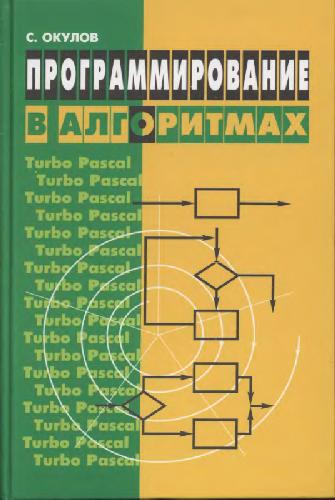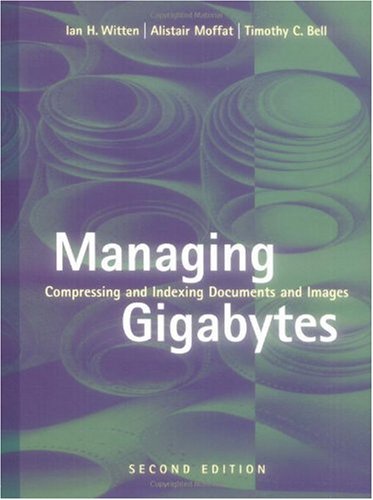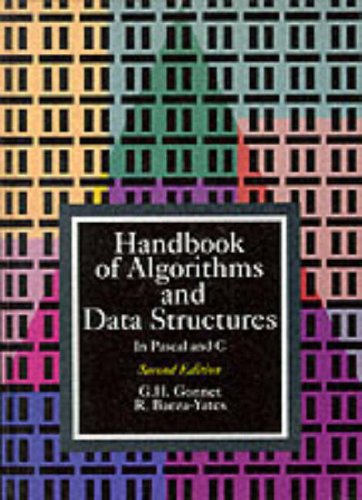Novell Training Services
Table of contents :
Title Page……Page 1
Contents……Page 3
Introduction……Page 13
Audience……Page 14
Certification and Prerequisites……Page 15
SUSE Linux Enterprise Server 10 Support and Maintenance……Page 18
Novell Customer Center……Page 19
SUSE Linux Enterprise Server 10 Online Resources……Page 20
Agenda……Page 21
Scenario……Page 22
Exercise Conventions……Page 23
Objectives……Page 25
Introduction……Page 26
Objective 1 Understand the Concept of Virtualization……Page 27
Objective 2 Understand How Xen Works……Page 28
Understand Virtualization Methods……Page 29
Understand the Xen Architecture……Page 31
Objective 3 Install Xen……Page 33
Exercise 1-1 Install Xen……Page 36
Objective 4 Manage Xen Domains with YaST……Page 37
Exercise 1-2 Install a Guest Domain……Page 43
Understand a Domain Configuration File……Page 44
Use the xm Tool……Page 46
Exercise 1-3 Change Memory Allocation of a Guest Domain……Page 49
Automate Domain Startup and Shutdown……Page 50
Exercise 1-4 Automate Domain Startup……Page 51
Understand the Basic Networking Concept……Page 52
Understand Bridging……Page 53
Understand the Network Interfaces in domain0……Page 54
Exercise 1-5 Check the Network Configuration……Page 58
Use Domain Save and Restore……Page 59
Use Migration and Live Migration……Page 60
Summary……Page 61
Objectives……Page 65
The Basic Functionality of a Web Server……Page 66
Install a Basic Apache Web Server……Page 67
Exercise 2-1 Install Apache……Page 70
Exercise 2-2 Test the Apache Installation……Page 71
Understand the Structure and the Basic Elements of the Apache Configuration Files……Page 72
Understand the Default Apache Configuration……Page 74
Objective 2 Configure Virtual Hosts……Page 76
Exercise 2-3 Configure a Virtual Host……Page 80
Objective 3 Limit Access to the Web Server……Page 81
Exercise 2-4 Configure User Authentication……Page 85
Objective 4 Configure Apache with OpenSSL……Page 86
Exercise 2-5 Configure SSL……Page 94
Understand how PHP Works……Page 95
Install PHP……Page 96
Test the PHP Installation……Page 97
Exercise 2-6 Install PHP……Page 99
Objective 6 Describe Tomcat……Page 100
Install the Tomcat Packages……Page 102
Exercise 2-7 Install Tomcat……Page 103
Understand the File System Structure……Page 104
Edit the server.xml File……Page 105
Exercise 2-8 Use a Configuration Template……Page 112
Objective 8 Install Web Applications……Page 113
Exercise 2-9 Install an Example Application……Page 115
Use the Manager to Control Web Applications……Page 116
Use the Admin Interface to Adjust the Server Configuration……Page 119
Limit Access to the Administration Tools……Page 121
Exercise 2-10 Enable the Manager and Admin Tools……Page 122
Objective 10 Use Port 80 to Access Tomcat……Page 123
Exercise 2-11 Configure rinetd to Forward Port 80 to Port 8080……Page 125
Summary……Page 126
Objectives……Page 131
Objective 1 Understand Samba……Page 132
Install Samba……Page 134
Exercise 3-1 Install Samba……Page 135
Understand Samba‘s Configuration File……Page 136
Objective 3 Configure User Authentication……Page 140
Exercise 3-2 Configure a Share for the User Geeko……Page 146
Use nmblookup……Page 147
Use smbclient……Page 148
Exercise 3-3 Access the Share of the User Geeko with smbclient……Page 151
Exercise 3-4 Mount Geeko’s Share……Page 153
Understand a Domain Controller……Page 154
Configure /etc/samba/smb.conf……Page 155
Objective 6 Integrate Samba in a Windows Domain……Page 158
Objective 7 Configure Samba as Print Server……Page 160
Share One Printer……Page 161
Preprocess on the Windows Client……Page 164
Exercise 3-5 Configure Samba as a Print Server……Page 166
Summary……Page 167
Objectives……Page 171
What xinetd Is……Page 172
Configure xinetd with YaST……Page 173
Manage xinetd Manually……Page 174
Exercise 4-1 Configure the Internet Daemon (xinetd)……Page 185
The Role of an FTP Server……Page 186
How FTP Works……Page 187
Advantages of PureFTPd Server……Page 188
Install and Run PureFTPd Server……Page 189
Configure PureFTPd Server……Page 191
Manage PureFTPd Logs……Page 196
Exercise 4-2 Configure Anonymous PureFTPd Access……Page 197
Overview……Page 198
Synchronize Time with netdate and hwclock……Page 202
The Network Time Protocol (NTP)……Page 205
Synchronize Time with NTP……Page 210
Exercise 4-3 Configure ntpd……Page 219
Objective 4 Configure NFS (Network File System)……Page 220
Exercise 4-4 Set Up and Manage Network File System (NFS)……Page 235
Summary……Page 236
Objectives……Page 239
Introduction……Page 240
Objective 1 Understand the Course Project……Page 242
Exercise 5-1 Prepare your Environment……Page 244
Objective 2 Use Basic Script Elements……Page 245
Exercise 5-2 Create a Basic Shell Script……Page 250
Objective 3 Understand Variables and Command Substitution……Page 251
Exercise 5-3 Use Variables and Command Substitution……Page 254
Create Branches……Page 255
Exercise 5-4 Use an if Control Structure……Page 259
Create Loops……Page 260
Exercise 5-5 Use a while Loop……Page 264
Objective 5 Use Arithmetic Operators……Page 265
Exercise 5-6 Use Arithmetic Operators……Page 268
Objective 6 Read User Input……Page 269
Exercise 5-7 Read User Input……Page 272
Objective 7 Use Arrays……Page 273
Exercise 5-8 Use Arrays……Page 276
Objective 8 Finalize the Course Project……Page 277
View Request Details……Page 278
Delete Requests……Page 279
Exercise 5-9 Add more Commands……Page 282
Use Shell Functions……Page 283
Exercise 5-10 Use Shell Functions……Page 286
Read Options with getopts……Page 287
Use the cut Command……Page 289
Use the date Command……Page 291
Use the sed Command……Page 292
Use the test Command……Page 297
Use the tr Command……Page 299
Summary……Page 301
Objectives……Page 305
Introduction……Page 306
The Difference Between Source Code and an Executable……Page 307
The Structure of a Simple C Program……Page 309
Compile a Simple C Program……Page 312
Exercise 6-1 Compile a Simple C Program……Page 313
Objective 2 Understand the Concept of Shared Libraries……Page 314
Use configure to Prepare the Build Process……Page 317
Use make to Compile the Source Code……Page 318
Install the Required Packages for a Build Environment……Page 320
Objective 4 Perform a Standard Build Process……Page 322
Exercise 6-2 Compile Software from a Source Package……Page 327
Summary……Page 328
Objectives……Page 331
Introduction……Page 332
Objective 1 Find Performance Bottlenecks……Page 333
Analyze Processes and Processor Utilization……Page 334
Analyze Memory Utilization and Performance……Page 336
Analyze Storage Performance……Page 340
Analyze Network Utilization and Performance……Page 344
Exercise 7-1 Analyze System Performance……Page 348
Analyze CPU-Intensive Applications……Page 349
Run Only Required Software……Page 350
Optimize Swap Partitions……Page 352
Change Hardware Components……Page 353
Exercise 7-2 Reduce Resource Utilization……Page 356
Configure IDE Drives with hdparm……Page 357
Tune Kernel Parameters……Page 359
Tune File System Access……Page 362
Change Hardware Components……Page 365
Exercise 7-3 Tune an IDE Hard Drive with hdparm……Page 366
Change Kernel Network Parameters……Page 367
Change Your Network Environment……Page 369
Objective 5 Use Powertweak……Page 371
Exercise 7-4 Use Powertweak……Page 375
Summary……Page 376
Objectives……Page 379
Introduction……Page 380
Objective 1 Describe the Differences between Devices and Interfaces……Page 381
Objective 2 Describe how Device Drivers Work……Page 382
Objective 3 Describe how Device Drivers Are Loaded……Page 384
Kernel Module Basics……Page 385
Manage Modules from the Command Line……Page 386
modprobe Configuration File (/etc/modprobe.conf)……Page 388
Exercise 8-1 Manage the Linux Kernel Modules……Page 390
Objective 5 Describe the sysfs File System……Page 391
Understand the Purpose of udev……Page 394
Understand how udev Works……Page 395
Understand Persistent Interface Names……Page 396
Exercise 8-2 Add a device symlink with udev……Page 399
Objective 7 Use the hwup Command……Page 400
From Configuration Files……Page 401
From sysfs……Page 403
Exercise 8-3 Explore Hardware Initialization……Page 405
Objective 8 Obtain Hardware Configuration Information from YaST……Page 406
Exercise 8-4 Obtain Hardware Configuration Information……Page 407
Summary……Page 408
SECTION 9 Prepare for the Novell CLP 10 Practicum……Page 411
Scenario……Page 412
Objective 1 Install a Xen Environment……Page 413
Objective 2 Configure a Web Server……Page 414
Objective 3 Configure a Samba File Server……Page 415
Objective 4 Automate System Tasks……Page 416
Index……Page 417







Reviews
There are no reviews yet.